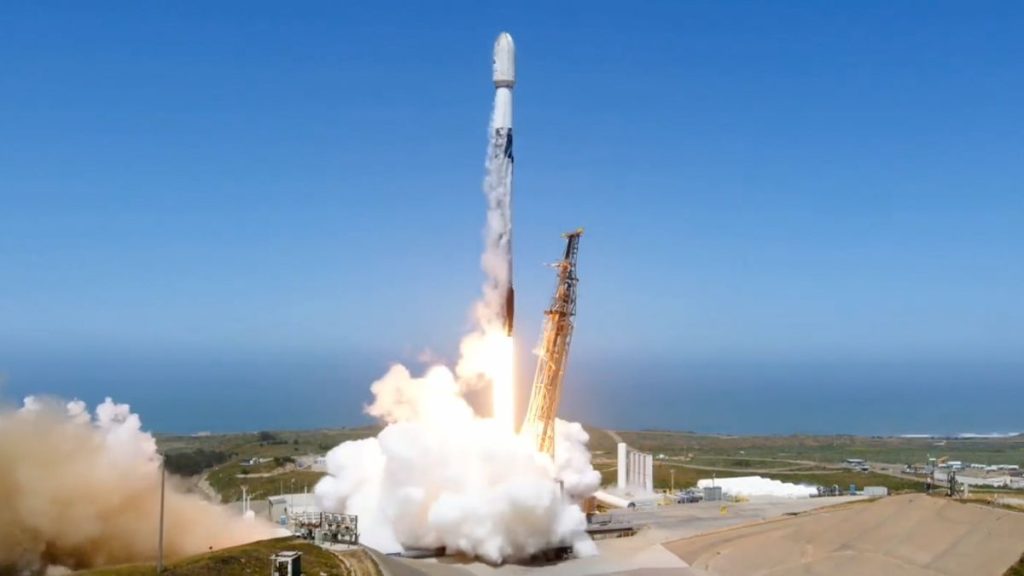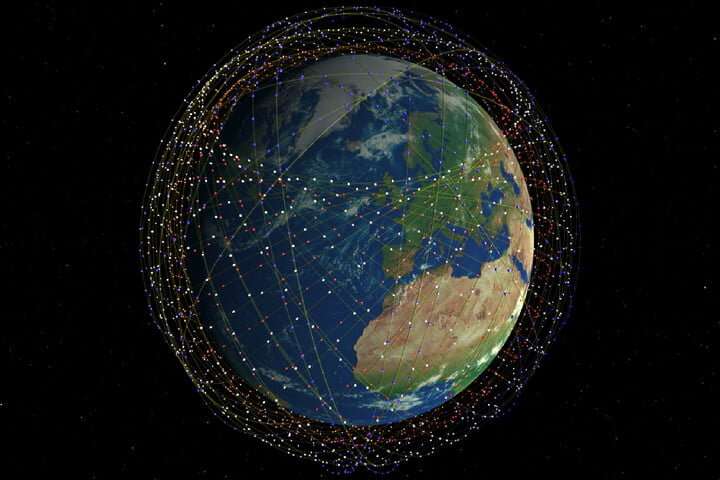SpaceX Achieves Milestone with Successful Starlink Satellite Launch
In a significant advancement for global internet connectivity, SpaceX successfully launched another batch of Starlink satellites on October 30, 2024. The mission took off from Vandenberg Space Force Base in California. This launch underscores SpaceX’s commitment to expanding its satellite constellation and enhancing internet access worldwide. The company aims to deploy thousands of satellites in low Earth orbit (LEO) to provide high-speed internet services to underserved areas across the globe.

The Falcon 9 rocket lifted off at 7:44 a.m. EDT, carrying 20 Starlink satellites. Among these, 13 featured direct-to-cell (DTC) capabilities. This innovation allows users to connect directly to the satellites without needing ground stations. It could revolutionize how remote areas access the internet. The successful deployment of these satellites marks another step toward SpaceX’s goal of creating a robust and reliable global broadband network.

As the Falcon 9 soared into the sky, viewers worldwide tuned in to watch the live stream of the launch. SpaceX has made it a tradition to broadcast these events, allowing enthusiasts and curious onlookers alike to witness the excitement of space exploration from their homes. Approximately eight minutes after liftoff, the first stage of the Falcon 9 successfully returned to Earth, landing on the drone ship “Of Course I Still Love You,” stationed in the Pacific Ocean. This marked the booster’s 14th successful launch and landing. It showcases SpaceX’s innovative reusability strategy that significantly reduces launch costs.
The deployment of these new satellites is crucial as SpaceX continues to expand its Starlink network. Currently, over 6,400 Starlink satellites are operational in orbit. They provide internet service to millions of users across more than 100 countries. The rapid pace of launches this year reflects SpaceX’s aggressive strategy to enhance its constellation’s capacity and coverage. In fact, about two-thirds of SpaceX’s more than 100 Falcon 9 missions in 2024 have been dedicated to Starlink deployments.

Despite its successes, SpaceX faces challenges as it scales its operations. Concerns have arisen regarding the impact of large satellite constellations on night sky visibility and astronomical observations. Bright trails left by these satellites can interfere with telescopes and other observational tools used by researchers worldwide. In response, SpaceX has been working on solutions such as designing darker satellites that minimize their reflectivity.
The DTC capability introduced with this latest batch of satellites represents a significant technological leap forward. By enabling direct communication between satellites and mobile devices, this feature could dramatically improve connectivity in remote regions where traditional internet infrastructure is lacking or non-existent. For instance, during natural disasters or humanitarian crises where ground communication networks fail, DTC-enabled Starlink satellites could provide critical communication links for emergency responders and affected communities.

SpaceX’s ambitious plans do not stop here. The company aims to continue launching more batches of Starlink satellites regularly. Future missions are set to bolster the network’s capabilities and expand coverage areas further. With each successful launch, SpaceX moves closer to realizing its vision of a fully connected world where high-speed internet is accessible to everyone.
Looking ahead, industry experts anticipate that as more satellites are deployed and technology improves, Starlink could become a game-changer in global telecommunications. High-speed internet access in rural and underserved areas promises not only to bridge digital divides but also to foster economic development by enabling businesses and individuals in these regions to participate more fully in the digital economy.
As we reflect on this latest achievement by SpaceX, it becomes clear that their efforts are not just about launching rockets but about transforming how we connect with one another across vast distances. The implications of these advancements extend beyond mere convenience; they touch upon essential aspects of modern life such as education, healthcare, and emergency response.
In conclusion, SpaceX’s successful launch of another batch of Starlink satellites is a testament to their innovative spirit and relentless pursuit of progress in space technology. As they continue to push boundaries and explore new frontiers in satellite communications, one thing remains certain: the future of global connectivity looks brighter than ever.

